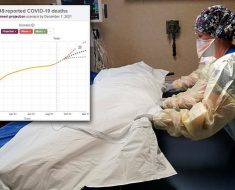
WEDNESDAY, Aug. 22, 2018 — Many studies have pointed to the serious health threats of long periods of uninterrupted sitting at home or at work.
Even if you get in a 30-minute exercise session a day, that may not be enough to undo all the damage of sitting.
An overall sedentary lifestyle has been linked to diabetes, cardiovascular disease, some cancers and premature death. Compounding the problem, not enough people are even meeting that basic goal of 150 minutes of moderate exercise a week.
In North America and Europe, between 70 percent and 95 percent of people are classified as inactive. What’s the answer? According to a panel of British health experts, sedentary office workers must find ways to get off their rears during every workday.
The ideal is to stand, move or do light activity for at least 4 hours daily. To make it easier, they suggest starting off with a goal of 2 hours, or about 15 minutes per hour of the average workday, and working up from there.
One way to achieve this is with an adjustable workstation that allows you to alternate between sitting and standing. If it’s not possible to get a desk that lifts, investigate getting a desktop device that raises and lowers your computer.
More ideas to get you moving:
- Twice a day, stand up and do a series of stretches targeting the neck, shoulders, back and legs.
- Use every coffee break to take a brisk walk around the office or through the building lobby.
- Don’t work through lunch — have it away from your desk even if you can’t get outside.
- Use a fitness tracker to count your steps — watching the number climb is a great motivator to do more.
Keep in mind that you may need to increase movement gradually to avoid feeling fatigue or even soreness from suddenly standing or moving a lot more.
And here’s a note for people who stand up at work all day: Break up your time with some seat-based work — prolonged static standing may itself be harmful.
More information
The American Heart Association has additional ideas for moving more at work.

Posted: August 2018
Source: Read Full Article





